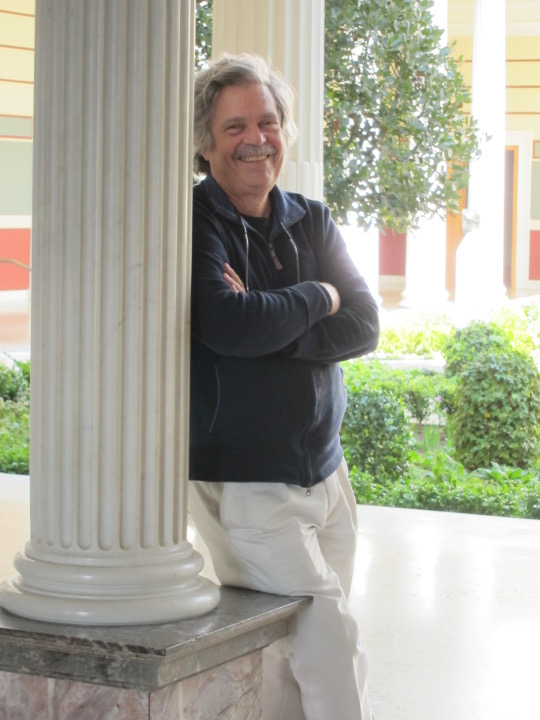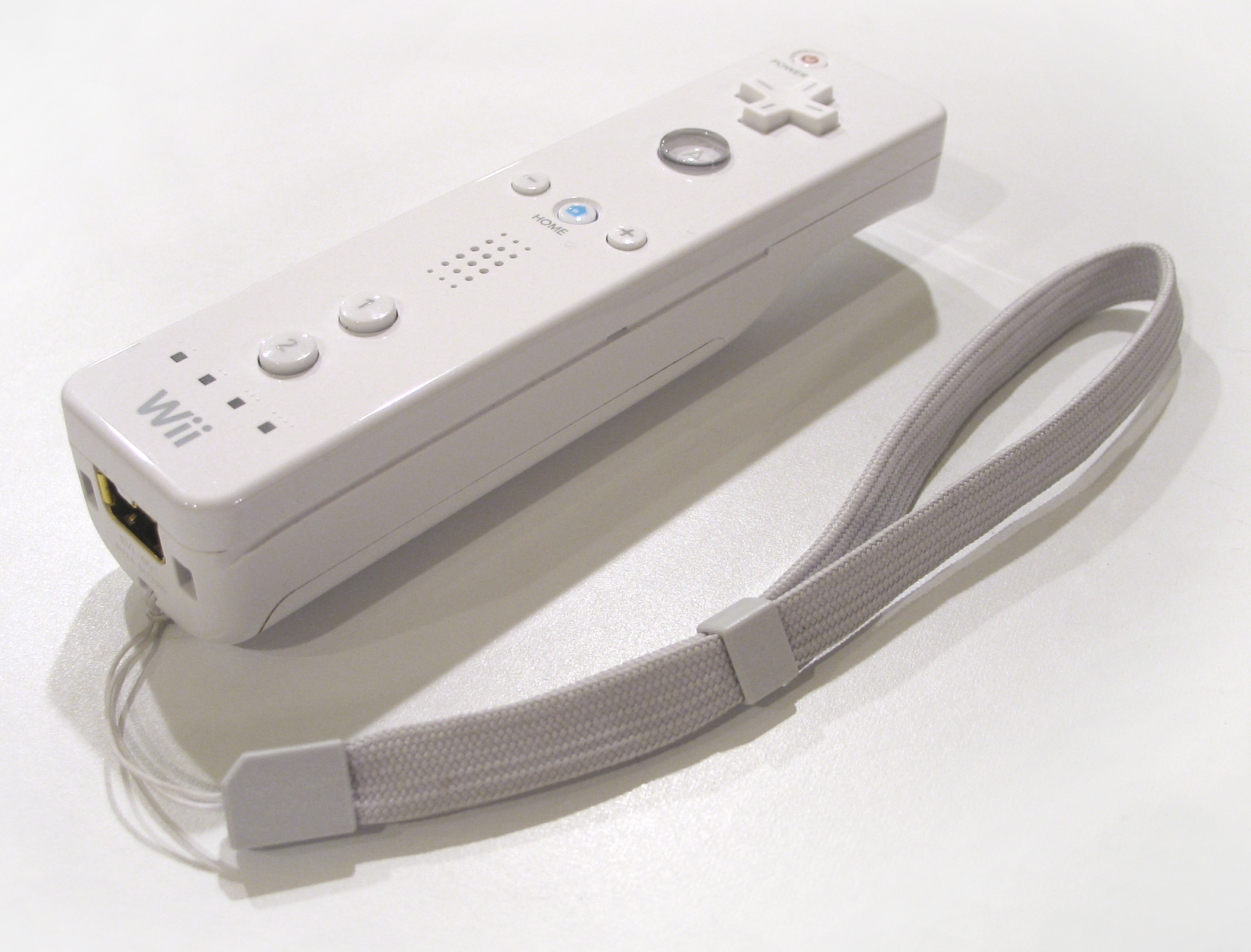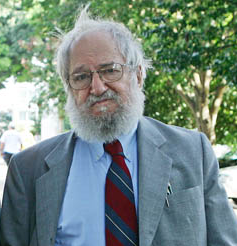|
Physical Etoys
Physical Etoys is a free open-source extension of Etoys developed by Gonzalo Zabala, Ricardo Moran, Sebastián Blanco and Matías Teragni at the Universidad Abierta Interamericana. Etoys is an object-oriented and prototype-based visual programming language created by Alan Kay for the use in education. Physical Etoys contains the majority of Etoys characteristics. Its philosophy is "help kids model and program the real world in order to learn more about it". Physical Etoys lets different electronic devices such as Lego NXT, Arduino boards, Sphero, Kinect, Wiimote joystick, among others, be easily programmed and interact between themselves due to its block scripting system. In 2010, Physical Etoys won the first innovation technology award given at the ESUG (European Smalltalk User Group) conference. Motivation Physical Etoys benefits robotics learning in primary/high school and it is based on the constructionism theory created by Papert. The reasons why Physical Etoys benefits ... [...More Info...] [...Related Items...] OR: [Wikipedia] [Google] [Baidu] |
Etoys (programming Language)
Etoys is a child-friendly computer environment and object-oriented prototype-based programming language for use in education. Etoys is a media-rich authoring environment with a scripted object model for many different objects that runs on different platforms and is free and open source. History * Squeak was originally developed at Apple in 1996 by Dan Ingalls. * Squeak is a Smalltalk implementation, object-oriented, class-based, and reflective, derived from Smalltalk-80 at Apple Computer. It was developed by some of the original Smalltalk-80 developers, including Dan Ingalls, Ted Kaehler, and Alan Kay. The team also included Scott Wallace and John Maloney. * Squeak 4.0 is released under the MIT License, with some of the original Apple parts remaining under the Apache License. Contributions are required to be under MIT. * “Back to the Future: the story of Squeak, a practical Smalltalk written in itself” by Dan Ingalls, Ted Kaehler, John Maloney, Scott Wallace, Alan Kay. ... [...More Info...] [...Related Items...] OR: [Wikipedia] [Google] [Baidu] |
Alan Kay
Alan Curtis Kay (born May 17, 1940) published by the Association for Computing Machinery 2012 is an American computer scientist best known for his pioneering work on object-oriented programming and windowing graphical user interface (GUI) design. At Xerox PARC he led the design and development of the first modern windowed computer desktop interface. There he also led the development of the influential object-oriented programming language Smalltalk, both personally designing most of the early versions of the language and coining the term "object-oriented." He has been elected a Fellow of the American Academy of Arts and Sciences, the National Academy of Engineering, and the Royal Society of Arts. He received the Turing award in 2003. Kay is also a former professional jazz guitarist, composer, and theatrical designer. He also is an amateur classical pipe organist. Early life and work In an interview on education in America with the Davis Group Ltd., Kay said: Ori ... [...More Info...] [...Related Items...] OR: [Wikipedia] [Google] [Baidu] |
Lego NXT
Lego Mindstorms NXT is a programmable robotics kit released by Lego on August 2, 2006. It replaced the first-generation Lego Mindstorms kit, which was called the Robotics Invention System. The base kit ships in two versions: the Retail Version (set #8527) and the Education Base Set (set #9797). It comes with the NXT-G programming software, or optionally LabVIEW for Lego Mindstorms. A variety of unofficial languages exist, such as NXC, NBC, leJOS NXJ, and RobotC. The second generation of the set, the Lego Mindstorms NXT 2.0, was released on August 1, 2009, featuring a color sensor and other upgraded capabilities. The third generation, the EV3, was released in September 2013. NXT Intelligent Brick The main component in the kit is a brick shaped computer called the NXT Intelligent Brick. It can take input from up to four sensors and control up to three motors, via a modified version of RJ12 cables, very much similar to but incompatible with RJ11 phone cords. The plastic ... [...More Info...] [...Related Items...] OR: [Wikipedia] [Google] [Baidu] |
Arduino
Arduino () is an open-source hardware and software company, project, and user community that designs and manufactures single-board microcontrollers and microcontroller kits for building digital devices. Its hardware products are licensed under a CC BY-SA license, while software is licensed under the GNU Lesser General Public License (LGPL) or the GNU General Public License (GPL), permitting the manufacture of Arduino boards and software distribution by anyone. Arduino boards are available commercially from the official website or through authorized distributors. Arduino board designs use a variety of microprocessors and controllers. The boards are equipped with sets of digital and analog input/output (I/O) pins that may be interfaced to various expansion boards ('shields') or breadboards (for prototyping) and other circuits. The boards feature serial communications interfaces, including Universal Serial Bus (USB) on some models, which are also used for loading programs. The ... [...More Info...] [...Related Items...] OR: [Wikipedia] [Google] [Baidu] |
Sphero
Sphero, Inc. (formerly Orbotix) is an American consumer robotics and toy company based in Boulder, Colorado. Their first product, the Sphero, is a white spherical robot launched in December 2011 capable of rolling around under the control of a smartphone or tablet. A remastered version, the Sphero 2.0, was launched in August 2013. Both products are now discontinued. In 2015, Sphero struck a licensing deal with The Walt Disney Company, Disney to create a BB-8 robot based on the ''Star Wars: The Force Awakens'' film. Following the success of that robot, Sphero also created a model of R2-D2 and Lightning McQueen. The Disney products were discontinued in 2018 after their partnership ended. Sphero's current product lineup includes several spherical robots like the original Sphero: the Sphero Mini, BOLT, and SPRK+. On February 19, 2019, Sphero announced a programmable tank-tracked kit called the Sphero RVR (pronounced "rover") on Kickstarter. It is advertised as a "go anywhere, do any ... [...More Info...] [...Related Items...] OR: [Wikipedia] [Google] [Baidu] |
Kinect
Kinect is a line of motion sensing input devices produced by Microsoft and first released in 2010. The devices generally contain RGB cameras, and infrared projectors and detectors that map depth through either structured light or time of flight calculations, which can in turn be used to perform real-time gesture recognition and body skeletal detection, among other capabilities. They also contain microphones that can be used for speech recognition and voice control. Kinect was originally developed as a motion controller peripheral for Xbox video game consoles, distinguished from competitors (such as Nintendo's Wii Remote and Sony's PlayStation Move) by not requiring physical controllers. The first-generation Kinect was based on technology from Israeli company PrimeSense, and unveiled at E3 2009 as a peripheral for Xbox 360 codenamed "Project Natal". It was first released on November 4, 2010, and would go on to sell eight million units in its first 60 days of availability. Th ... [...More Info...] [...Related Items...] OR: [Wikipedia] [Google] [Baidu] |
Wiimote
The Wii Remote, also known Colloquialism, colloquially as the Wiimote, is the primary game controller for Nintendo's Wii home video game console. An essential capability of the Wii Remote is its Motion controller, motion sensing capability, which allows the user to interact with and manipulate items on screen via motion sensing, gesture recognition, and pointing device, pointing which is used for the console, using accelerometer and image sensor, optical sensor technology. It is expandable by adding attachments. The attachment bundled with the Wii console is the #Nunchuk, Nunchuk, which complements the Wii Remote by providing functions similar to those in gamepad controllers. Some other attachments include the Classic Controller, Wii Zapper, and the #Wii Wheel, Wii Wheel, which has originally been used for the racing game, ''Mario Kart Wii''. The controller was revealed at both Electronic Entertainment Expo, E3 2005 and Electronic Entertainment Expo, E3 2006 and the Tokyo Game Sho ... [...More Info...] [...Related Items...] OR: [Wikipedia] [Google] [Baidu] |
Constructionism (learning Theory)
Constructionist learning is the creation by learners of mental models to understand the world around them. Constructionism advocates student-centered, discovery learning where students use what they already know, to acquire more knowledge.Alesandrini, K. & Larson, L. (2002). Teachers bridge to constructivism. The Clearing House, 119–121. Students learn through participation in project-based learning where they make connections between different ideas and areas of knowledge facilitated by the teacher through coaching rather than using lectures or step-by-step guidance. Further, constructionism holds that learning can happen most effectively when people are active in making tangible objects in the real world. In this sense, constructionism is connected with experiential learning and builds on Jean Piaget's epistemological theory of constructivism. Seymour Papert defined constructionism in a proposal to the National Science Foundation titled ''Constructionism: A New Opportunit ... [...More Info...] [...Related Items...] OR: [Wikipedia] [Google] [Baidu] |
Seymour Papert
Seymour Aubrey Papert (; 29 February 1928 – 31 July 2016) was a South African-born American mathematician, computer scientist, and educator, who spent most of his career teaching and researching at MIT. He was one of the pioneers of artificial intelligence, and of the constructionist movement in education. He was co-inventor, with Wally Feurzeig and Cynthia Solomon, of the Logo programming language. Early years and education Born to a Jewish family,Remembering Seymour Papert: Revolutionary Socialist and Father of A.I. Benjamin Ivry, 3 August 2016 Papert attended the |
Auto PE
{{Disambiguation ...
Auto may refer to: * An automaton * An automobile * An autonomous car * An automatic transmission * An auto rickshaw * Short for automatic * Auto (art), a form of Portuguese dramatic play * ''Auto'' (film), 2007 Tamil comedy film * Auto (play), a subgenre of dramatic literature * Auto (magazine), an Italian magazine and one of the organizers of the European Car of the Year award * A keyword in the C programming language used to declare automatic variables * A keyword in C++11 used for type inference * Auto (Mega Man), a character from ''Mega Man'' series of games * Auto, West Virginia * Auto, American Samoa * AUTO, a fictional robot in the 2008 film ''WALL-E'' See also * Otto Otto is a masculine German given name and a surname. It originates as an Old High German short form (variants ''Audo'', ''Odo'', ''Udo'') of Germanic names beginning in ''aud-'', an element meaning "wealth, prosperity". The name is recorded fro ... [...More Info...] [...Related Items...] OR: [Wikipedia] [Google] [Baidu] |





.jpg)

